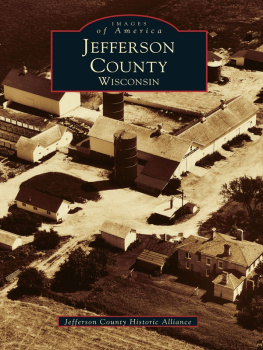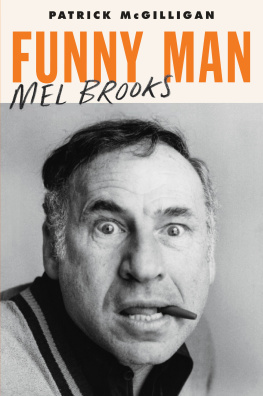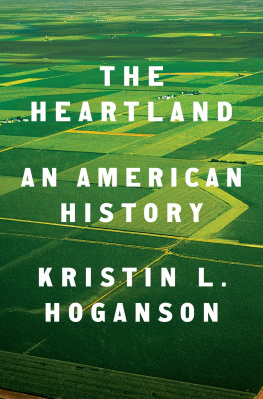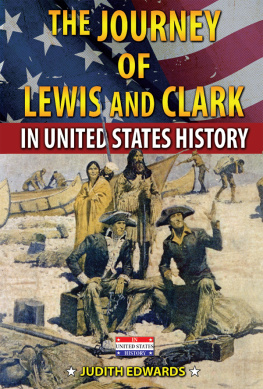Published by The History Press
Charleston, SC
www.historypress.com
Copyright 2021 by Michelle Brooks
All rights reserved
E-Book year 2021
Front cover: courtesy Cole County Historical Society.
First published 2021
ISBN 978.1.4396.7298.3
Library of Congress Control Number: 2021937167
Print Edition ISBN 978.1.4671.4941.9
Notice: The information in this book is true and complete to the best of our knowledge. It is offered without guarantee on the part of the author or The History Press. The author and The History Press disclaim all liability in connection with the use of this book.
All rights reserved. No part of this book may be reproduced or transmitted in any form whatsoever without prior written permission from the publisher except in the case of brief quotations embodied in critical articles and reviews.
This book, Hidden History of Jefferson City, might have remained hidden itself if not for the early encouragement of friends and family that this author was capable of the work. Three of those who championed the writing and the writer left this world too soon to see the final product.
These pages are dedicated to Larry Dixon, cherished father, and inspirational coworkers Bob Watson and Shelley Gabert.
CONTENTS
PREFACE
This is not intended to be a comprehensive telling of the citys history, nor a timeline of events. I took the word hidden seriously in the assignment. My goal was to find lesser-known people, places and pillars of the Capital Citys history.
Many intersecting stories I anticipate have been or will be told in works by other local authors, including Bob Priddys history of the Capitol, Wayne Johnsons future work about people from Cote sans Dessein, Callaway County and Terry Rackers book on the history of the local airport.
Since this year is the 200th anniversary of the Great State of Missouri and last year was the bicentennial for Cole County, it should be kept in mind that Jefferson City has its own bicentennials approaching.
My hope is that local history fans will still find in these pages those I didnt know that lines. And, perhaps, the reader lukewarm to the past will find a few pieces of history with which they can identify.
My dad loved science fiction. When Star Wars was released, I was a youngster. I remember asking him what it was about. He said it was a story following a pair of robots through the galaxy. Without having met the characters or learned the storyline, that answer did not really pique my interest. Then, we went to the theater. Except for crawling into my dads lap at the first introduction of Darth Vader, I loved it. I understood what he meant about following R2-D2 and C-3PO through three generations of galactic unrest. But I also saw how they were just part of a greater story.
In writing this book on the hidden history of Jefferson City, I have looked at topics that might not sound glamorous or compelling on the surface. Utilities? Transportation? Media? Unless youre really into these things, they may sound superficially disinteresting. Please dont let that stop you!
Jefferson Citys origin and growth has been dependent on its being the Capital City. That created challenges to achieve that purpose out of virgin forest and then to keep up with expectations as hundreds of legislators visited the city for only a few months every two years. Then, other cities wanted to take away the title and the heart of this central city. The race was on to build and become more than what the rest of the state might have thought of this rural town.
From the first newspaperman, innkeeper and merchant, strong, business-minded men and women have risked and sacrificed to develop a capital city for Missouri. Hoteliers made investments in buildings guaranteed to be filled for only four out of every twenty-four months. Ferrymen vied for control of the slim market of travelers crossing north to south on the Missouri River. Roads were carved after trees were pulled down and limestone cut.
The railroad brought an increase of visitors and potential, inspiring industry and diversified specialties. As modern innovations became available, men with families to provide for and their own businesses to maintain organized for the benefit not only of the citys future but also that of the state.
By the time of the second Capitol fire in 1911, Jefferson Citys residents and business leaders had laid down the permanent lines of infrastructure. The decades-old criticism of Jefferson City being a backwater or unfit to remain the states capital was put to rest in the statewide vote to rebuild the present Capitol building.
In this book are the stories of those builders, visionaries, risk-takers and entrepreneurs who laid the earliest and most essential foundations of the Capital City.
ACKNOWLEDGEMENTS
This book was not possible without the decades of work of historians who collected, wrote and preserved these stories. My biggest thank you has to go to newspapers as a whole. They preserve a world of history and culture and deserve our patronage as a looking glass for future generations. The filing cabinet on the west wall of the Missouri River Regional Library is a treasure-trove of clippings.
Reporters like Lawrence Lutkewitte took the time to talk with old-timers in his day to write a series of stories on local history in the 1940s. Other newspapers gave print space to visitors recollections of their childhoods in the city and later to the Cole County Historical Society, whose members once contributed regular columns.
Local authors have published stories, including, Dr. Robert Youngs Pioneers of High, Water and Main, a phenomenal first-person recollection of the city in the 1840s and 1850s. There are also Dr. Walter Schroeders first-person stories of Old Munichburg, local German community and the greater citys story.
Thank you to other custodians of local history, including Mark Schreiber, Gary Kremer, Henry Gensky, Nancy Arnold Thompson, Jenny Smith, Debbie Goldammer, Jane Beetem, Jeremy Amick, Arnold Parks and Craig Sturdevant.
My deepest appreciation goes to those who work at archive, museum and library settings for the valued impact of their preservation of and access to the pages of history. Specifically, Katherine Owens and John Petersen at the Missouri State Museum were generous in their replies to my questions. Darrell Strope at the Cole County Historical Society was gracious with his time, allowing me to search the wonderful files in the genealogy library.
To the staff of the Missouri State Archiveyoure the best! Christina Miller, Kelsey Berryhill, Ariadne Rehbein, Mary Mitchell, Daniel Reeder, Erika Woehlk, and others were easy to work with and knowledgeable of what materials the archive might have to help with specific queries. And thank you to State Archivist John Dougan for the casual chats that yielded Post-it Notes full of new sources to check out.
That gratitude extends to my coworkers in the imaging department for putting up with my random questions about local history and about their preferences in historic literature. Thanks to Taylor Allen, John Caples, Bridger Creed, Carl Haake, Joseph Hite, Lynn Voyles, Liana Twente and Kyrstin Keim. And to my boss and retired boss, Aaron Hodges and Bruce Meister, thanks for being flexible and supportive of my research!











